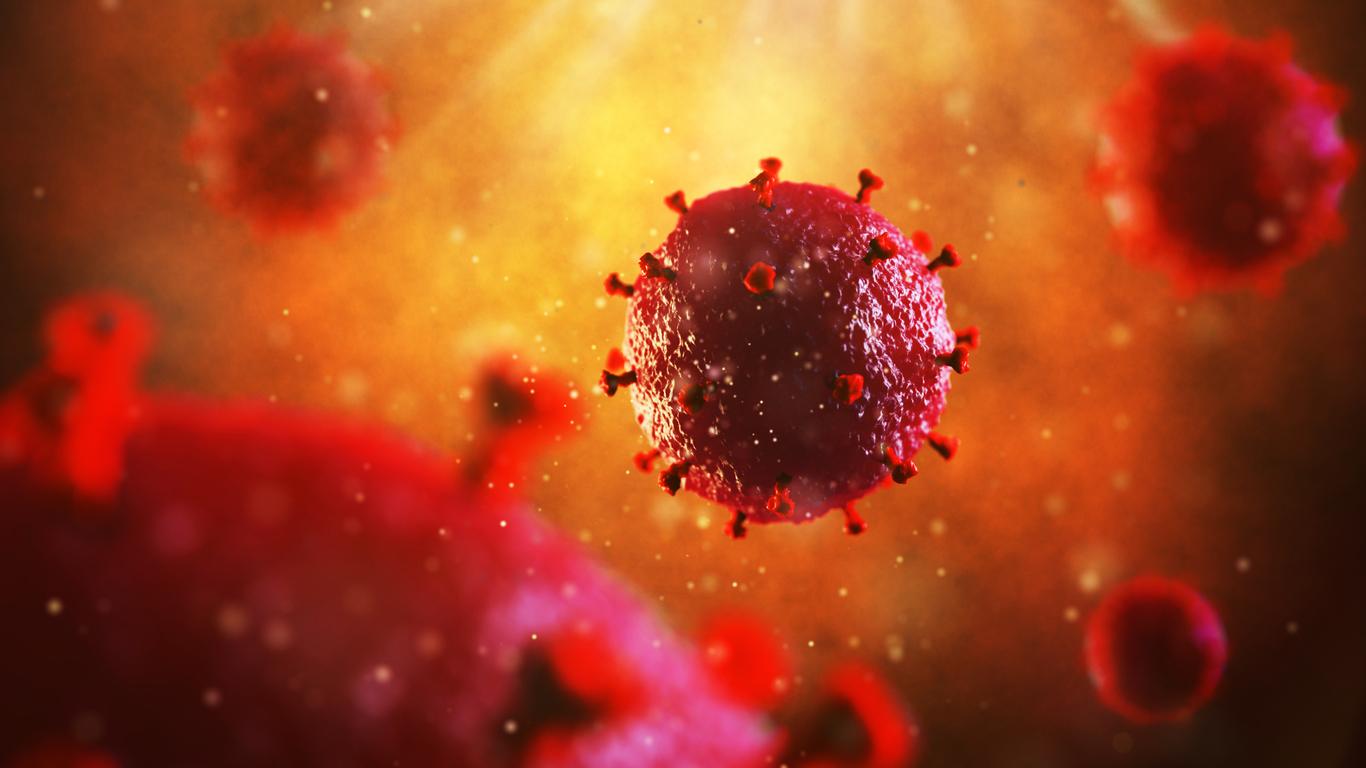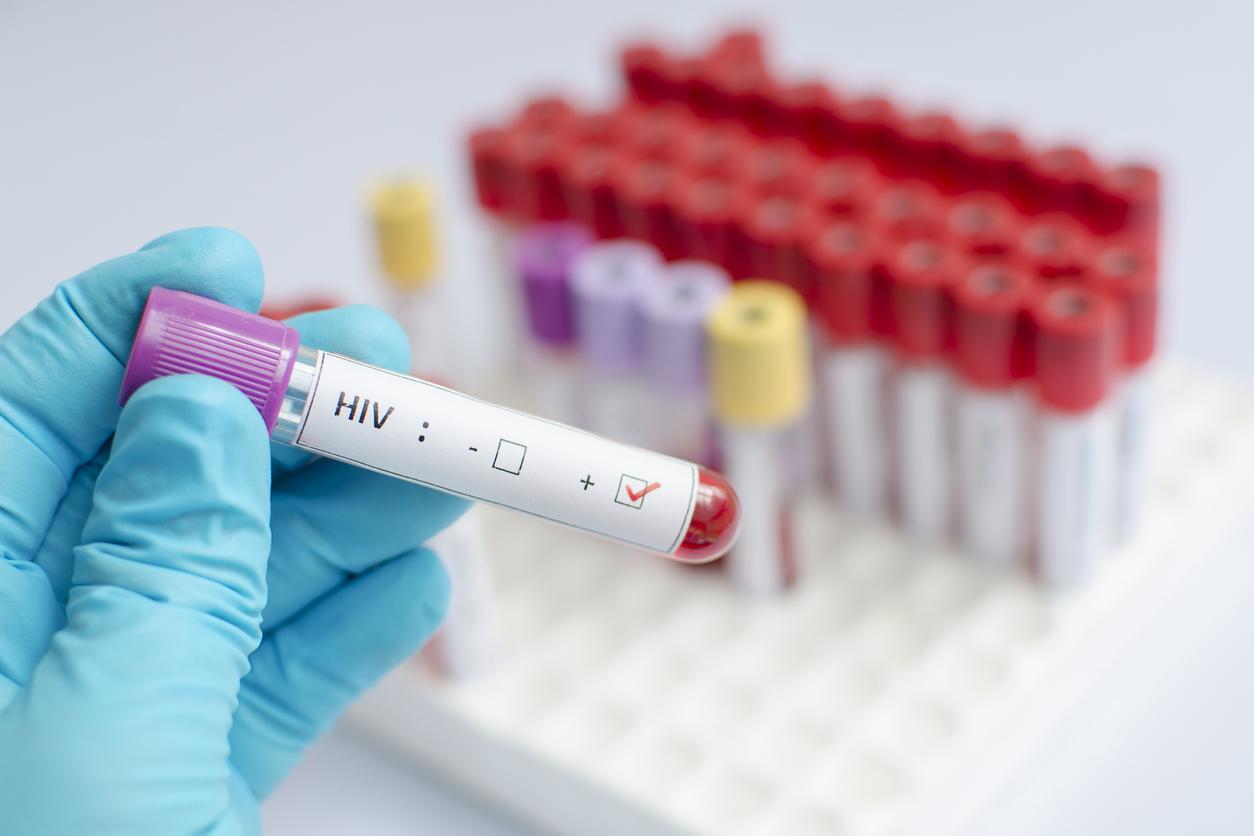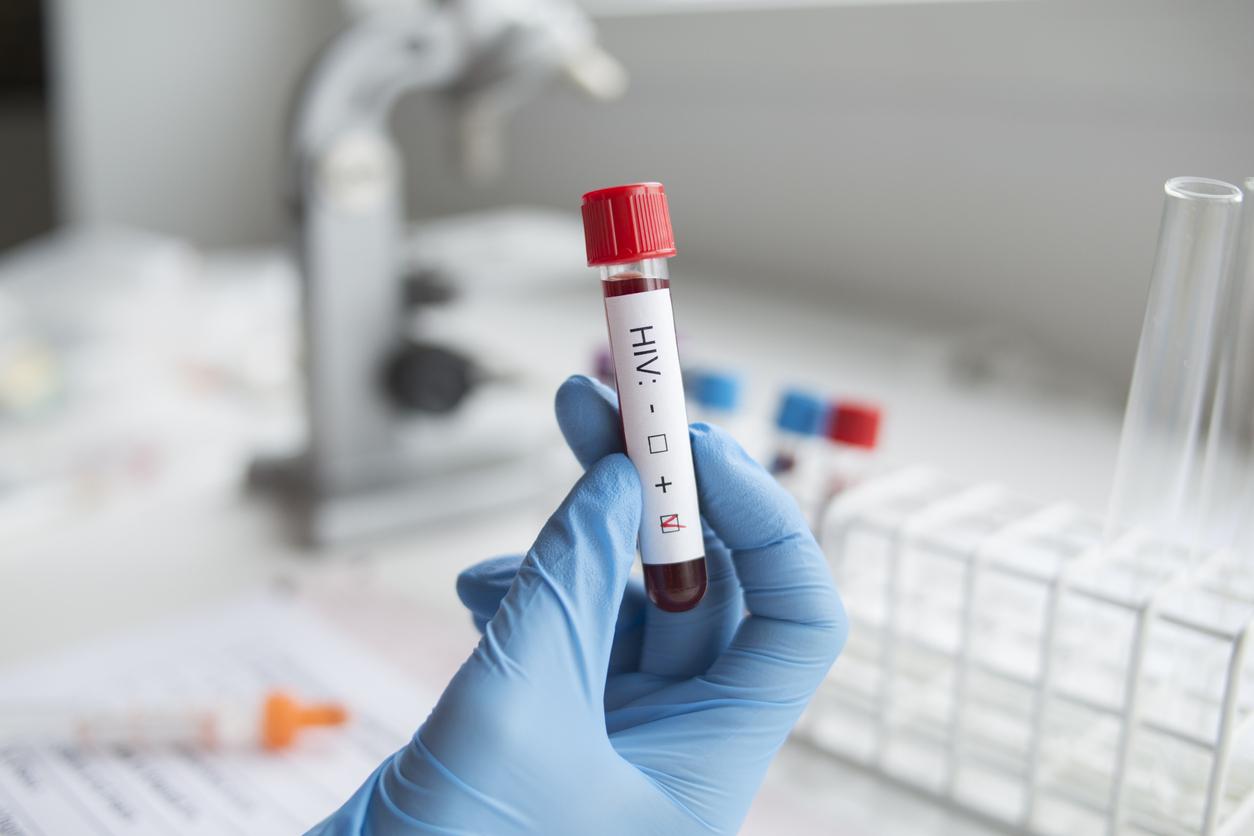Transmission of the human immunodeficiency virus is thought to be due to the way a viral protein, called Rev, interacts with part of the viral RNA. Explanations.

- Researchers have discovered the importance of functional Rev-RRE activity, that is, how the viral Rev protein interacts with part of the viral RNA (RRE).
- During vaginal transmission of HIV, the viruses causing new infections tended to have low Rev-RRE activity.
- This discovery could, ultimately, allow the development of new treatments against HIV.
Between 4,200 and 5,700 people discovered their seropositivity to the human immunodeficiency virus (HIV) in 2022 in France, according to the HIV-STI public health bulletin. This number increased again in 2021 and 2022, following the sharp decline observed in 2020, but remains lower than in 2019.
HIV: successful transmission is influenced by the Rev protein
HIV is responsible for the disease AIDS. It is spread through the bodily fluids of an infected person, i.e. blood, breast milk, semen and vaginal secretions. HIV transmission then occurs in certain very specific circumstances: mother-to-child transmission, contact with contaminated blood or during sexual intercourse not protected by a condom if there is vaginal, anal or oral penetration. When a person is newly infected, there is usually only one viral variant transmitted to them. This is what scientists call genetic bottleneckor “genetic bottleneck”.
In a new study, published in the journal Open Forum Infectious Diseasesresearchers from L’University of Virginiain the USA, have identified a new HIV transmission factor. They believe that successful transmission is influenced by a protein produced by the virus – the Rev protein – and how it interacts with the virus’s RNA (called the Rev response element, or RRE).
“A new vision of HIV transmission” which “could pave the way for better drugs”
During their work, scientists studied HIV sequences during female-to-male vaginal transmission of the virus. The objective was to understand the reasons for the genetic bottleneck: why contamination is successful and why there is onlya single viral variant transmitted when a person is newly infected?
Verdict: This is due to the Rev-RRE functional activity, that is to say the way in which the Viral Rev protein interacts with part of the viral RNA, the Rev response element or RRE. The researchers indeed discovered that, during vaginal transmission of HIV, the variants of the virus causing new infections tended to have low Rev-RRE activity. This means that variations in Rev-RRE activity can determine which variants of the virus trigger a new infection.
Another observation: Rev-RRE activity could also allow the virus to adapt to different physical conditions, which could play a key role in how HIV takes hold in a new person. “This is a new vision of HIV transmission, says Dr. Marie-Louise Hammarskjöldanother author of the study, in a communicated. If Rev-RRE activity is important here, it could also be important for other aspects of HIV disease.“
A discovery which, ultimately, could enable the development of new treatments. “Protecting people from HIV is a major public health goalsays Dr. Patrick Jacksonauthor of this study. Our work on understanding the HIV transmission process could pave the way for better drugs to prevent HIV.”















